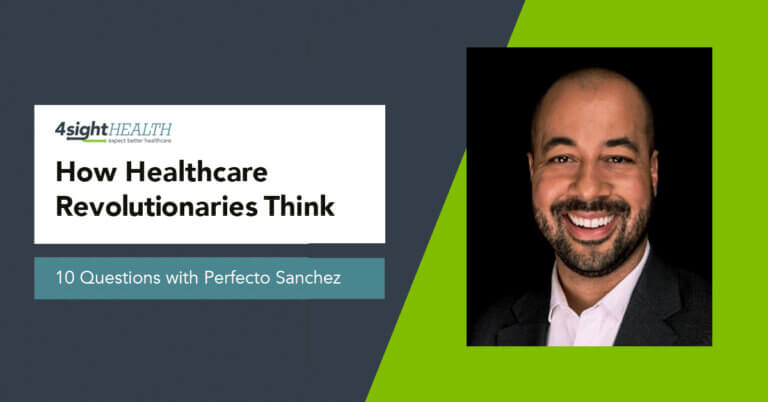March 17, 2022

Overcoming Medical Orthodoxy (Part 1): The Origins of Dysfunction
Author’s note: This is the first article in a series on reimagining American medical education. This article details the limitations of the current models in training doctors to combat chronic disease and practice value-based care. Part 2 illustrates innovative approaches to training medical professionals through the lens of four new medical schools. These schools have developed innovative approaches for training medical professionals to manage the health of distinct populations holistically and cohesively. Part 3 identifies several powerful forces that are disrupting established medical practices and paving the way for “New Medicine’s” emergence. Part 4 explores strategies for enhancing clinicians’ capabilities to practice value-based care and population health medicine.
December 17, 2015 was a red-letter date in the annals of American medicine. On this date, Kaiser Permanente announced [1] its launch of a new medical school emphasizing primary care, hands-on clinical experience outside traditional settings, health equity, incisive technologies and collaborative team-based care delivery.
Kaiser’s expectation is that many graduates of its new medical school will choose to practice within the company’s vertically-integrated, care-delivery network. Others will become missionaries for holistic and integrated healthcare care services. They would help spread the “Kaiser way” to health systems and physician clinics around the country.
The impetus behind the decision was straightforward and bold. Bernard Tyson, the late Kaiser Permanente CEO, noted that “… new models of care mean we must re-imagine how physicians are trained.” [2] Publicly, he spoke often of the inordinate cost of “retooling” traditionally-trained physicians to practice medicine within Kaiser’s system, which focuses on chronic disease care, prevention, community engagement and population health.
In a conversation with medical futurist Eric Topol, Tyson observed:
“We [Kaiser Permanente] are already in medical education. We train thousands of residents every year. Many come in to the Kaiser Permanente program and then we have to reorient them to how we do things…. The medical school, for us, is a logical next piece to the puzzle of how to train physicians for the future.” [3]
That vision became the Kaiser Permanente Bernard J. Tyson School of Medicine (KPSOM).
KPSOM welcomed its inaugural class of fifty students in the fall of 2020. Nearly 11,000 applicants vied for the fifty slots, making KPSOM the nation’s most competitive medical school. That is a powerful market signal. Clearly, KPSOM’s commitment to holistically addressing the health and healthcare needs of everyday Americans resonated deeply with applicants.
Alarm bells should be ringing loudly in the halls of America’s medical schools. Instead, complacency reigns.
Sounding the Alarm
In his 1950 posthumously published book Scientific Autobiography, Nobel Prize-winning physicist Max Planck made a sage observation on the advancement of scientific knowledge:
An important scientific innovation rarely makes its way by gradually winning over and converting its opponents…. What does happen is that its opponents gradually die out, and that the growing generation is familiarized with the ideas from the beginning: another instance of the fact that the future lies with the youth. [4]
Conventional wisdom has christened this observation as “Planck’s Principle.” Its truncated essence is that “Science progresses one funeral at a time.” Proponents of Planck’s Principle posit that science changes as successive generations of scientists acculturate and adapt new understandings of scientific phenomena.
As Planck’s logic makes plain, orthodoxy rarely capitulates without a fight. Healthcare orthodoxy is no exception. Modern medicine’s defining paradigm is evidenced-based diagnosis and treatment of disease and injury. This singular focus blinds orthodox medicine to the compelling national need for population-based healthcare.
Social and economic disparities, uneven care access and unhealthy behaviors have triggered catastrophic levels of chronic disease.6 Nevertheless, traditional medical schools continue to train physicians to treat acute conditions in high-cost facilities with ever-higher levels of specialization. Consequently, new medical professionals are ill prepared to assist the U.S. healthcare system in tackling its greatest challenge.
In response, a new generation of medical schools is emerging to train physicians to become proficient in diagnosing, treating and preventing the chronic conditions that are crippling the nation’s population. Their “new medicine” goals are to manage chronic conditions and reduce the need for acute interventions.
These new schools challenge medical orthodoxy and are gaining momentum. At issue is the extent to which current medical education curriculum and training can adapt to new-world realities. In the process, old-world ideas and institutions must perish so new-world practices can thrive.
Let’s begin our exploration of old and new education models by documenting the pandemic of chronic disease infecting American society. The movement to revolutionize medical education has its roots in the current system’s inability to train doctors to meet the larger care needs of the populations they serve.
The Chronic Disease Conundrum
Beginning in the 1980s, public health researchers began to chronicle a dramatic upward increase in the levels of chronic disease plaguing Americans. Increasing chronic disease coincided with a massive consumption shift toward processed foods, more sedentary lifestyles and expanding portion sizes.
 By the 1990s and continuing today, chronic disease had become a catastrophic health challenge for the nation, particularly in medically-underserved, low-income urban and rural communities. The CDC estimates that the U.S. dedicates 90% [5] of its healthcare expenditures to treat individuals with chronic and mental health conditions.
By the 1990s and continuing today, chronic disease had become a catastrophic health challenge for the nation, particularly in medically-underserved, low-income urban and rural communities. The CDC estimates that the U.S. dedicates 90% [5] of its healthcare expenditures to treat individuals with chronic and mental health conditions.
The ramifications of this alarming trend are profound. U.S. life expectancy has declined four of the last five years, principally due to higher levels of chronic disease.[6] In heartbreaking fashion, COVID-19 has revealed significant access gaps and disproportionately hospitalized and killed people from low-income communities with high levels of chronic disease.
As chronic disease proliferates throughout American society, the healthcare system treats its symptoms, not its root causes. This misdirected focus leads to predictable and devastating results. Other wealthy nations do better. They balance provision of health and social care services to achieve superior health status metrics. This quote from the Peterson-Kaiser Family Foundation Health System Tracker captures the performance disparity in life expectancy:
Since the 1980s…growth in life expectancy at birth in the U.S. has diverged from that of comparable countries. Between 1980 and 2019, life expectancy in the U.S. increased by approximately 3 fewer years than in peer countries. [7]
The hallmarks of the U.S. healthcare system are ever-higher healthcare costs and a population more burdened by disease. More Americans fear paying for medical bills than getting seriously ill. [8] That is just wrong.
The on-the-ground reality for far too many Americans is a massive mismatch between the enhanced primary-care and mental-health services they need to manage their health and the overdeveloped, cumbersome and excessively expensive treatment services the U.S. healthcare system offers.
It is impossible to appreciate why this mismatch occurs without first understanding the origins of modern American medicine and the system’s unwavering commitment to its current educational paradigm. Medical education’s brand of orthodoxy established itself over a century ago during a period of revolutionary change.
In Flexner We Trust
In the early 1900s, the United States had only a few elite medical enterprises. The most notable was the then-new Johns Hopkins School of Medicine (founded in 1893). Hopkins emphasized training, scientific research and clinical consistency throughout its operations. In contrast, most hospitals were squalid, unregulated and clinically inadequate. [9]
With the support of the American Medical Association, the Carnegie Foundation engaged Abraham Flexner in 1908 to survey medical education in the U.S. and Canada. Flexner published his findings in 1910.
Flexner’s Report called for rigorous admission criteria, adherence to scientific protocols and government regulation of medical schools. Few medical schools at the time met Flexner’s standards. The report recommended closing more than 120 of the 150-plus medical schools then operating in the country.
Response to the Flexner Report was rapid and profound. Within four years, 31 states refused to license graduates from substandard medical schools. Within 10 years, almost a hundred medical schools closed or merged. Despite a fast-growing population, the number of U.S. medical students dropped from 28,000 in 1904 to just 14,000 in 1920. [10]
In place of substandard medical education, the Flexner Report promoted the Johns Hopkins training model, which included two years of science education and two years of clinical training, followed by extensive residencies at teaching hospitals. Medical schools universally adopted that approach and operated within a tripartite mission (education, research and clinical practice) that emphasized the power of science and the authority of the physician.
The broad adoption of the Hopkins model transformed American medicine. Its model of evidence-based diagnosis and treatment governs healthcare delivery to this day. Its singular focus on disease diagnosis and treatment, however, has created significant gaps in care delivery and access.
More than a century after Flexner, U.S. healthcare today prioritizes specialty care and has created a superstar physician culture. It fails to prevent disease and promote health. Healthcare delivery is fragmented, hospital centric, physician dominated and hierarchical. Aligned professionals, including pharmacists, nurse practitioners and physician assistants, rarely practice at the top of their license.
Given this operating reality, it is not surprising that U.S. medical education still largely applies the four-year Flexner paradigm for training new doctors. U.S. medical schools enroll 40,000 first-year students through the nation’s 155 fully-accredited medical schools. [11]
Despite the prevalence of chronic disease, current medical education and ongoing training place little emphasis on care management, engagement and social determinants of health. Orthodox medical education simply isn’t getting the job done as chronic disease and skyrocketing costs inflict an increasingly heavy burden on the American people.
Meager Reform Efforts
There have been attempts to reform medical education. In 2010, the Carnegie Mellon Foundation published a follow-up study 100 years after the original Flexner report, entitled Educating Physicians: A Call for Reform of Medical Schools and Residencies. [12, 13] This report recommended four key adaptions to medical education.
- Standardize learning outcomes and individualize the learning process.
- Integrate formal knowledge with clinical experiences.
- Develop habits of inquiry and improvement.
- Explicitly cultivate formation of professional identity.
While this study inspired a wave of thoughtful assessment and suggestions for reform, it represents evolutionary rather than revolutionary change. Given institutional inertia and the perverse financial incentives embedded within fee-for-service medicine, it’s doubtful that legacy schools will reinvent their educational models to the extent required to successfully combat spreading chronic disease.
Fundamental changes to the medical practice model require fundamental changes in medical education and ongoing training models. Numerous innovative leaders and upstart institutions are taking up that cause. They’re designing programs and curricula that prompt students to practice the systemic change they seek in American healthcare.
Colleen O’Connor, the executive vice dean at the upstart Whole Health School of Medicine and Health Sciences, describes the benefits of starting with a clean slate in redesigning medical education:
“It’s very hard to create change within medical education. If we went to a school and said, ‘We want to shift your curriculum to include self-care and whole health as foundational principles’ the first answer we’d get might be, ‘Well, if you’re going to add that, what are you going to take away?’ Starting from scratch, we don’t have to facilitate change, we can create change from the start.” [14]
Here’s the bottom line. Despite a century’s worth of medical advances, in many respects the American people are sicker than they’ve ever been. It’s time for a paradigm shift.
Conclusion: Unorthodox Change
For more than a century, the Flexner paradigm governing medical education, research and clinical delivery has dominated the healthcare industry even as its structural flaws have become more apparent. In response to a broader societal demand for kinder, smarter and affordable healthcare services, new paradigms for medical education and ongoing physician training have emerged to challenge orthodox beliefs and practices.
These new models emphasize engagement, prevention and well-being as well as team-based models for holistic care delivery. These “unorthodox” practices challenge the ongoing validity of the Flexner paradigm.
The existential question for orthodox medical schools is whether they can adapt their curriculum and practices to societal demands for healthcare transformation. If they fail to adapt, new-paradigm medical schools will be ready to replace them.
Somewhere, Max Plank is smiling.
Read All 4 parts of this series on Overcoming Medical Orthodoxy
- Part 1: Dysfunction in Medical Education
- Part 2: Reinventing Medical Education
- Part 3: “Old Medicine” Is Showing Its Age
- Part 4: Retooling Clinicians for “New Medicine”
Sources
- https://www.wsj.com/articles/kaiser-permanente-to-launch-medical-school-1450368001
- https://www.bizjournals.com/sanfrancisco/news/2015/12/17/kaiser-permanente-to-open-its-own-school-of.html
- https://www.medscape.com/viewarticle/867711#vp_
- https://books.google.com/books/about/Scientific_Autobiography_and_Other_Paper.html?id=MZJtzQEACAAJ
- https://www.cdc.gov/chronicdisease/about/costs/index.htm
- https://www.wsj.com/articles/u-s-life-expectancy-fell-by-1-5-years-in-2020-the-biggest-decline-in-generations-11626840061
- https://www.healthsystemtracker.org/chart-collection/u-s-life-expectancy-compare-countries/
- https://www.norc.org/PDFs/WHI%20Healthcare%20Costs%20Coverage%20and%20Policy/
WHI%20Healthcare%20Costs%20Coverage%20and%20Policy%20Topline.pdf - https://www.theatlantic.com/magazine/archive/1910/06/medical-education-in-america/306088/
- https://www.ncbi.nlm.nih.gov/pmc/articles/PMC3543812/
- https://www.aamc.org/news-insights/press-releases/enrollment-us-medical-schools
- https://www.wmcarey.edu/sites/default/files/documents/COM/PD/Nov2012%20-%20Carnegie%20Report%
20on%20Educating%20Physicians.pdf - https://www.ncbi.nlm.nih.gov/pmc/articles/PMC3204956/ 14. Interview, 4/28/21





